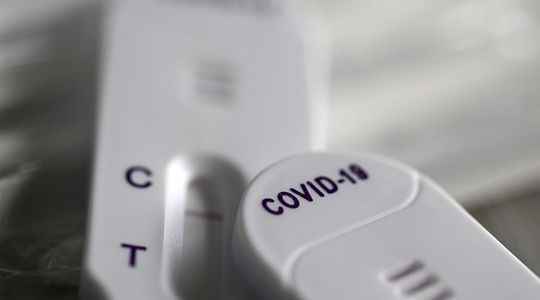In France, the number of people infected with Covid-19 has continued to grow over the past two weeks. Every day on average, 40,000 French people test positive, an increase of 6% compared to last week. The number of hospitalizations (5,821) and critical care admissions (556) has also increased over the past seven days (13.1% and 14.9% more than last week). Faced with this ninth wave of the epidemic, the government has launched a “solemn appeal for vaccination” and invites the French to wear the mask again, especially in busy public places. “I follow the situation day by day and the decisions will follow the evolution of the situation”, said the Minister of Health François Braun.
In Europe, France is no exception. According to the European Center for Disease Prevention and Control, the European 14-day average is 280 cases of Covid-19 per 100,000 inhabitants. Only Hungary, Finland and Sweden account for more new contaminations than France.
An increase in cases almost everywhere
According to the latest bulletin from european center for disease prevention and control, “an increase in cases within 7 days compared to the previous week was observed in 15 countries or areas”. In Belgium, for example, all the indicators are on the rise. Last week the number of cases increased by 28%, as did hospitalizations (+36%). Also in the UK, a 6% rise in positive cases has been noted as the country has seen a lull so far. Along with Austria, Greece and Slovenia, the UK had the highest testing rate last week. However, it was Finland, France, Hungary and Sweden that saw the biggest increase in test positivity compared to the previous week, according to the CEPCM.
Conversely, Germany saw its curve reversed. After a peak in mid-October at 100,000 cases per day on average, the country now records around 37,000 daily cases. However, the authorities remain vigilant with regard to these figures because the Germans test themselves less than before and use self-test formulas more, which very often are not declared when they are positive. Same finding of stability in Italy according to the Gimbe monitoring institute. However “the number of new weekly cases is no longer a reliable indicator of viral circulation, underestimated by at least 50%”, notes the president of the Foundation, Nino Cartabellotta, in a newspaper interview Il Fatto Quotidiano. “The number of positive cases is unreliable, he adds, both due to the widespread use of ‘do-it-yourself’ swabs and the lack of testing for asymptomatic people.”
Few restrictive measures, apart from wearing a mask
In France, the debate around wearing a mask and awareness of barrier measures are gradually reappearing. However, in Europe, if the restrictive measures had disappeared everywhere, the wearing of a mask in public transport remains so far in Spain, Greece, Austria or even in Lithuania and Cyprus. In Germany, if the surgical mask is in force in everyday public transport, an FFP2 mask is required for longer journeys, including the train. In addition, some Landers still require an antigen test within 24 hours or a PCR test within 48 hours, including those who have been vaccinated.
In hospitals, nursing homes, or even pharmacies, more European countries have kept wearing a mask compulsory. This is the case of Italy, Germany, Portugal, Spain and even Poland. In France, it is the head of the establishment who decides whether or not to fulfill his obligation. Others, such as Bulgaria and the United Kingdom, have chosen for several months to abandon any restrictions related to the wearing of masks.
As for vaccination, a majority of European countries are struggling to initiate the recall campaign for a fourth dose among the vulnerable public. This is the case in France, as Minister of Health François Braun recalled on Sunday. But also in Italy, where nearly three out of four people are covered, according to the Gimbe foundation.
